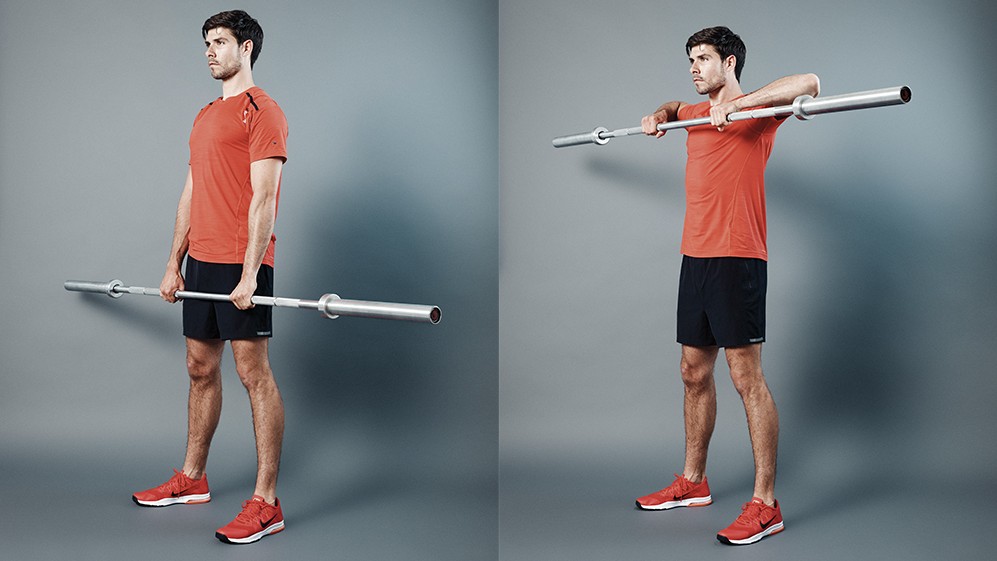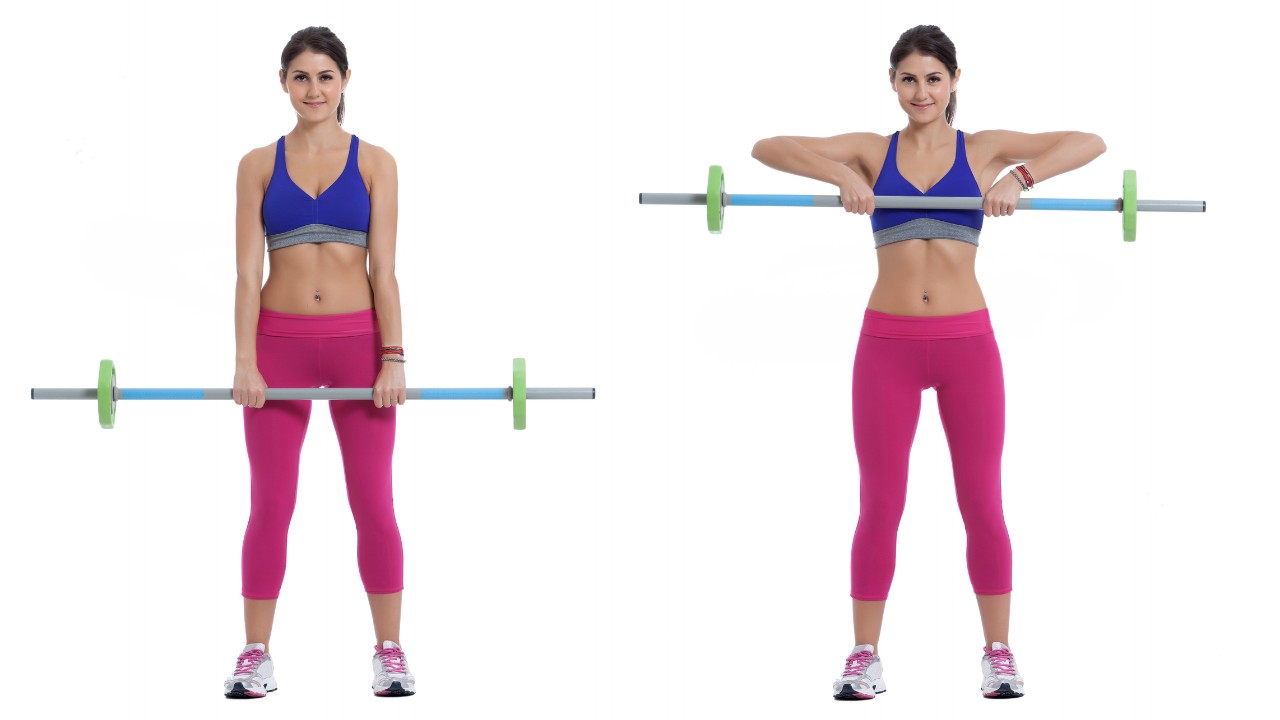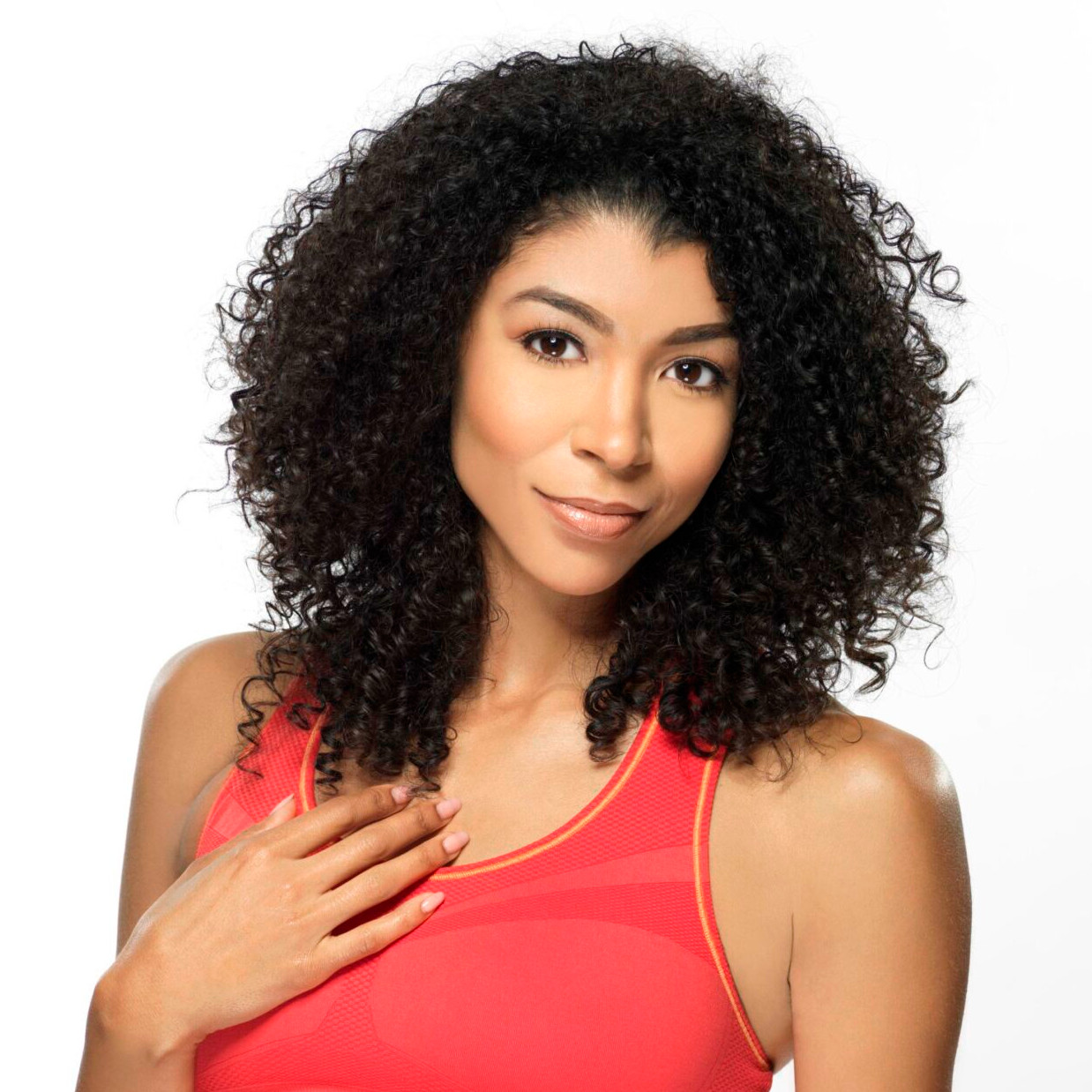How To Do The Upright Row
Build bigger traps and boulder shoulders by nailing this upper-body exercise

The upright row is one of the best back exercises around for building bigger traps. These upper-back muscles, which resemble a trapezoid shape and extend from the top of the spine to the mid back and laterally to the shoulder blades, are all too often neglected, even by committed gym-goers, because they’re tricky to train and impossible to see without a mirror (or two).

Not training your traps could lead to imbalances and weaknesses that have an impact on your other lifts. Conversely, well-developed traps will help you perform a variety of moves better, including squats, deadlifts, cleans and bench presses.
Aesthetically speaking, the upright row is also among the best shoulder exercises to target the front and middle deltoids of the shoulders. These muscles not only help create the V-shaped upper back popular with bodybuilders, but they are also crucial to stabilize the shoulder joint and protect it from injury.
Here we will outline the exercise’s key benefits, explain why it should always form the cornerstone of the best back workouts, and provide some expert tips for beginners and experienced gym-goers to help you truly master the upright row once and for all.
Benefits Of The Upright Row
The upright row is a staple of bodybuilding workouts for its effectiveness at growing the upper-back muscles, but its benefits translate far beyond the weights room.
One of its main advantages is a greatly reduced risk of injury to the neck and shoulders. Well-developed traps and rhomboids help cushion the neck, spine and shoulder girdle from heavy blows you might experience in contact sports.
A strong upper back also provides extra stability for compound moves like deadlifts and front squats, helping you resist the weight from pulling you forward. Strong, robust traps can also benefit CrossFitters and powerlifters when performing dynamic Olympic lifts like the snatch and the clean and jerk.
Sign up for workout ideas, training advice, reviews of the latest gear and more.
By helping improve your posture, upright rows can help with everyday activities, as well as correcting hunched shoulders from too much time spent at your desk.
Finally, upright rows carry plenty of cross-over benefits for your core. Holding the weight in front of your body increases the engagement of your abdominal muscles, while pulling the load towards your chin will test the strength of your lower back.
Which muscles do the upright row work?
“The upright row works multiple muscle groups simultaneously, making it an excellent compound exercise for building mass and strength across your shoulders and upper back,” says CrossFit Games athlete James Sprague.
It is also one of very few movements that primarily targets the traps, which can help to stabilize your neck and maintain a healthy, upright posture. Along with the traps, upright rows also primarily work the rhomboids.
These small, deep-lying muscles of the mid/upper back are largely hidden from sight, but are vital for mobilizing the shoulder blades. Strong rhomboids also boost upper-body lifts by helping to stabilize the shoulders while pressing weight overhead.
After the traps and rhomboids, the upright row helps strengthen the anterior and lateral deltoids, muscles that sit on the front and middle of the shoulders. Similarly it works the rotator cuff muscles to stabilize the shoulder joint, the biceps to draw the weight up and down, and the core muscles on the front and back of your midline to brace your spine.
How To Do A Upright Row
Here’s our expert guide, suitable for beginners and advanced gym-goers alike, although if you have limited training experience it’s a good idea to read out FAQs below, especially the advice on whether the upright row is safe for shoulders.
Start with your feet shoulder-width apart, standing tall, holding a barbell or EZ-bar with an overhand grip (palms facing you). Position your hands slightly narrower than shoulder-width apart. Keeping your chest facing forward and abs braced hard, lift the bar until it is level with your upper chest, keeping it close to your body at all times. Keep the lifting stage smooth to avoid excess strain on your wrists, elbows or shoulder joints. Pause in this top position, focusing on squeezing your traps as hard as possible, then slowly lower the weight to the start position.
Sprague says: “Focus on lifting the weight with your back muscles rather than your biceps and lead with your elbows, keeping them above your forearms throughout.”
Upright Row Form Tips
1. Start light
Check your ego at the door to avoid embarrassment—or worse, injury. “Lifting too much weight will always be to the detriment of your form,” says Sprague. If you can’t keep your body upright and have to use momentum to shrug the bar up, you’ve gone too big too soon.
The Fix: If you’re unsure how heavy to go, start with a set of upright rows using an unloaded barbell. Once you’re confident with the technique, add weight in small 1.25kg or 2.5kg increments.
2. Don’t cheat
Lifting too heavy can also lead to jerky upper-body movements, loss of balance and an overarched back, meaning the muscles you want to work are missing out and your risk of injury increases.
The Fix: To avoid using momentum, perform the lift with your back against a wall, suggests Kern Alexander, a certified personal trainer at Leading Edge Personal Trainers in New York City. “The wall will stop you rocking back and forth so you can’t cheat the reps with your back or legs. And if you can’t lift the weight with your back against a wall, then you shouldn't lift it at all.”
3. Adjust your grip
The upright row is typically done with a shoulder-width grip, but small adjustments can subtly alter which muscles are recruited.
The Fix: A narrow grip will shift the focus to the front deltoids and forearms, although it may increase the strain on your rotator cuff muscles. If you’re battling any lingering shoulder issues, or want to focus on your traps, widen your grip.
4. Watch your elbows

Your elbows should remain higher than your wrists throughout the upright row to effectively activate the muscles of your shoulders and reduce undue load on your wrists.
The Fix: Keep your knuckles pointed down toward the floor. Bend your elbows and pull the barbell straight up until it reaches your chest, ensuring your wrists stay below the level of your elbows at all times.
5. Use a foam roller beforehand
“Tight or overactive traps are common in people who carry a lot of tension in their neck and shoulders, which can reduce the effectiveness of this exercise,” says Alexander. It’s vital to relax and mobilize your traps before your first set of upright rows.
The Fix: Spend a few minutes using a foam roller on your upper back as part of your pre-upright row warm-up. Check our guide on how to use a foam roller for the best results.
FAQs
Is the upright row safe for my shoulders?
As with any exercise, the upright row carries a small risk for those unfamiliar with the movement. It also requires a decent range of motion of the upper back and shoulders, as well as precise form to minimize the risk of injury, especially as you add weight.
“There’s no blanket rule—everyone’s body is different,” says Alexander “If you can do them pain-free, with total control, they are a perfectly fine exercise. But it’s worth checking that you’ve got enough rotational shoulder mobility before you load up the weight.”
Upright rows may lead to an injury if you lack stability or glute strength, adds physiotherapist Katie Knapton, founder of Physio Fast Online. “If your whole movement chain is not working properly you could end up overusing your shoulders,” she says, pointing to the example of track and field athletes.
“When sportsmen or women perform throwing movements, they use their whole body, not just their shoulders. You need to strengthen the whole chain, and not look at the shoulder in isolation, especially if you have vulnerability in that region.”
Is the upright row better than the bent-over row?
The upright row and bent-over row may sound similar, but they present a slightly different challenge to your joints and muscles. “The bent-over row works your whole back as well as your biceps,” says Sprague, “whereas the upright row is predominantly a shoulder exercise, with some added back benefits.”
“These exercises target different muscle groups,” says Alexander, adding that when in the forward leaning hinge position of the bent-over row, your mid and lower back take the strain. “When standing tall for the upright row, the weight will pull your arms down so the upper traps have to work hard to resist gravity.”
Upright Row Variations
Dumbbell upright row
Why Switching to dumbbells for your upright row means that you can work each side of the body individually and identify any strength imbalances in your shoulders and back. It also allows for a more natural range of movement than using a barbell, even if you might have to reduce the overall weight used a little when lifting dumbbells.
How Hold the dumbbells by your waist in an overhand grip, with your palms facing you. Lift the weights to your shoulders, squeeze your traps, then lower.
Cable upright row
Why Using a cable machine means that there is tension in the muscles throughout the entire exercise, because you will be resisting the pull of the machine when you lower the bar with control.
How Attach a straight-bar handle to the lowest position on a cable machine and hold it in both hands in front of your waist. Lift the bar to your shoulders, pause for a beat, then lower it slowly.
About Our Experts

Kern Alexander is an ACE-certified personal trainer and a NASM-certified corrective exercise specialist. With his wife Noelle McKenzie, he co-founded Leading Edge, an in-home personal training business based in New York City. He specializes in weight management, strength training, bodybuilding and treating a range of musculoskeletal conditions, including sciatica and back pain.

Noelle McKenzie is an ACE-certified personal trainer, functional training specialist and level 1 Kettlebell Kings training expert. With her husband Kern Alexander, she co-founded Leading Edge, an in-home personal training business based in New York City. Her training style is centered around yoga, kettlebell training and improving functional movement patterns.

James Sprague is a CrossFit Games athlete from Snoqualmie, Washington. He began competing in 2017, finishing fourth in the Boys 14-15 division, and he’s been rising up the rankings ever since. Currently, he holds 33rd place in the CrossFit Games World Wide Ranking, and has relocated to Naples, Florida, to train under Matt Torres, head coach of Brute Strength HQ. James is also a NASM-certified personal trainer, offering fitness coaching services through his company Next Gen Performance.

Anna Gora is a health writer and certified PT with more than a decade’s experience in the fitness industry. She provides online health coaching to people as part of the UK’s Healthier You: NHS Diabetes Prevention Programme and has a master’s degree in Nutrition, Physical Activity & Public Health from the University of Bristol. As well as Coach, Anna also contributes to sister site Fit&Well and science news website Live Science.
- Joe WarnerFormer editor of Men’s Fitness UK
- Nick Harris-FrySenior writer
